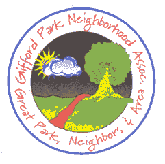The Ice House
In the early 1900s till about 1940 an old, very small, ice station was located next to the
alley by the present Kum & Go store. Ice, “natures gift to man,” was a boon to home
refrigeration. A large, or small, oak icebox was a part of most kitchens. Ice in 25-50-70-
100 lb. blocks was sold from horsedrawn wagons and later from trucks. The iceman
stopped at each house and delivered the required number of pounds right into the
icebox. Housewives could buy coupons for ice and put a card in the front window showing
the amount needed. Ice blocks cost 35-40 cents for 100 lbs. The iceman was as popular
then as the ice cream man is today. Shouts of “Here comes the iceman” heralded his
coming, and children gathered around to scramble for chips of ice. A friendly iceman
would deliberately shave off pieces of ice for the youngsters.
Sometimes on a hot summer day more ice was needed. Many children were dispatched
with their little red wagons to buy ice at the ice house. This was also handy if extra ice
was needed to cool the watermelon, homemade ice cream, or beverages.
Ice was cut during the winter from the Missouri River, Carter Lake and Seymore Lake in
Ralston and was stored in big wooden barns under an insulating blanket of sawdust and
burlap. A 1929 advertisement for ice read: “Ice is not only the most economical form of
refrigeration—it is the ONLY form of refrigeration that is absolutely safe and dependable
at all times. You KNOW that a block of ice will never get out of order. SAFE, SOUND,
SILENT.”
Yes, the old icebox was safe, sound and silent, but who would trade their present
refrigerators or freezers for an icebox today? However, if you do own an old icebox, don’t
throw it away because it may be a valuable antique.
Source
The Omaha World-Herald, May 2, 1954
Various newspaper advertisements
alley by the present Kum & Go store. Ice, “natures gift to man,” was a boon to home
refrigeration. A large, or small, oak icebox was a part of most kitchens. Ice in 25-50-70-
100 lb. blocks was sold from horsedrawn wagons and later from trucks. The iceman
stopped at each house and delivered the required number of pounds right into the
icebox. Housewives could buy coupons for ice and put a card in the front window showing
the amount needed. Ice blocks cost 35-40 cents for 100 lbs. The iceman was as popular
then as the ice cream man is today. Shouts of “Here comes the iceman” heralded his
coming, and children gathered around to scramble for chips of ice. A friendly iceman
would deliberately shave off pieces of ice for the youngsters.
Sometimes on a hot summer day more ice was needed. Many children were dispatched
with their little red wagons to buy ice at the ice house. This was also handy if extra ice
was needed to cool the watermelon, homemade ice cream, or beverages.
Ice was cut during the winter from the Missouri River, Carter Lake and Seymore Lake in
Ralston and was stored in big wooden barns under an insulating blanket of sawdust and
burlap. A 1929 advertisement for ice read: “Ice is not only the most economical form of
refrigeration—it is the ONLY form of refrigeration that is absolutely safe and dependable
at all times. You KNOW that a block of ice will never get out of order. SAFE, SOUND,
SILENT.”
Yes, the old icebox was safe, sound and silent, but who would trade their present
refrigerators or freezers for an icebox today? However, if you do own an old icebox, don’t
throw it away because it may be a valuable antique.
Source
The Omaha World-Herald, May 2, 1954
Various newspaper advertisements
| Gifford Park Neighborhood Association P.O. Box 31462, Omaha, NE 68131-0462 |
| Gifford Park History Book |
